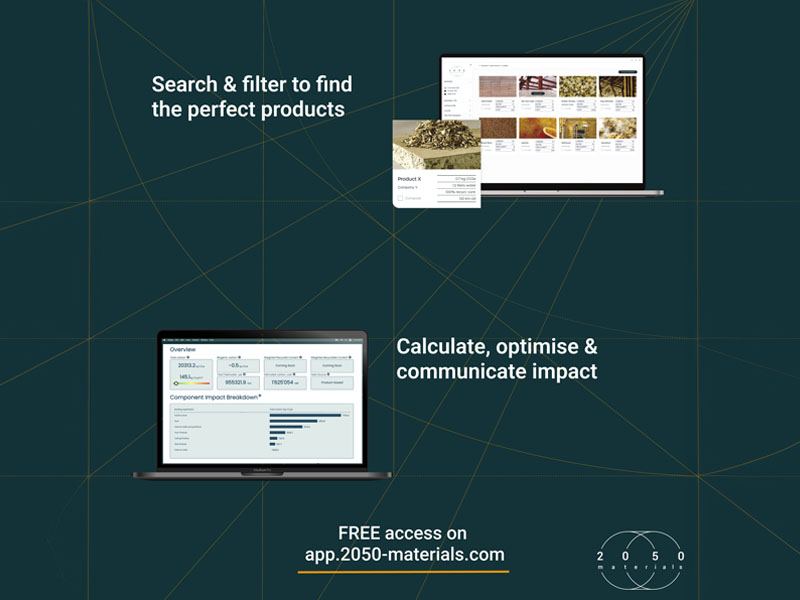Data is becoming the backbone of every operation when it comes to the Architectural Engineering and Construction (AEC) space. There’s a digital record for almost everything, from blueprints to material specs. But here’s the issue: while data explodes, its quality and format go downhill. However, there’s also a variety of fragmented information that’s not standardized, making it a nightmare for anyone who wants to do something useful with it. Having a lot of data isn’t enough; it must be structured, valid, and analyzable. Inaccurate or badly formatted data can lead to wrong decisions, waste of resources, and even failed projects. At 2050 Materials, the team identifies that good data is the cornerstone of sustainable and efficient building. That’s why 2050 Materials laser-focuses on creating the most comprehensive and high-quality database of climate data around building materials. “Using AI-powered algorithms combined with bottom-up Life Cycle Assessment (LCA) calculations, we’re ensuring the data is abundant, accurate, and useful. With our API-first approach, we integrate this crucial sustainability data seamlessly into digital design processes, enabling real-time impact calculations. We’re not just data providers; we’re long-term partners committed to leveraging technology for a more sustainable built environment,” beings Phanos Hadjikyriakou, Co-Founder & CEO 2050 Materials.
In a nutshell, the 2050 Materials platform is a free-to-access library of sustainable & transparent building materials. The company aims to support construction professionals in designing & building in line with climate targets. 2050 Materials has developed a free-to-access web application that hosts the largest database of sustainability data around construction materials. The platform offers specification and comparison functionality for architects and quantity surveyors, as well as a Whole Life Cycle Assessment tool that enables users to generate carbon reports for their projects quickly and assess alignment with industry benchmarks.
2050 Materials offers a comprehensive solution comprising two integral components that significantly enhance the understanding of product performance and contribute to the transformation of human and environmental health through the promotion of sustainable buildings and data-driven choices. The first component is a digital platform featuring WLCA tools. This free-to-access web application hosts the industry’s largest database of sustainability data related to construction materials. Architects and quantity surveyors benefit from its specification and comparison functionality, along with a Whole Life Cycle Assessment (WLCA) tool that enables users to swiftly generate carbon reports for their projects and assess alignment with industry benchmarks.
The second key component is a robust API providing access to classified and tagged sustainability data on construction products and materials. This API is utilized by digital and BIM teams in architecture and engineering firms to power their internal sustainability processes. Additionally, quantity surveyors leverage the API to expand their standard rate libraries, enabling them to quantify carbon impacts alongside cost considerations. By registering with 2050 Materials, users can access a product library featuring over 100,000 products enriched with sustainability data from Environmental Product Declarations (EPDs) and other certifications. The platform also offers an easy-to-use comparison feature, a new LCA/carbon tool, an embodied carbon optimizer, and convenient unit conversion capabilities.
The vision behind the creation of this platform is centered on the transformative impact it seeks to make on human and environmental health. The platform’s vision is encapsulated in the commitment to promote sustainable buildings. By integrating environmentally conscious practices into construction and design, the company strives to minimize the ecological footprint of structures, ensuring that they not only meet the needs of the present but also contribute to a healthier and more sustainable future. “Moreover, the key element of our vision involves democratizing access to data-driven choices. We recognize the power of information in driving positive change, and our goal is to make this information accessible to everyone. By providing easily understandable and actionable data, we empower individuals and organizations to make informed decisions that align with sustainability goals. In essence, the birth of this platform is fueled by the belief that by promoting sustainable building practices and democratizing data-driven choices, we can profoundly impact human well-being and contribute to preserving our environment,” points Hadjikyriakou.
Since opening its doors, 2050 Materials has been creating a difference by building a sustainable construction culture. The company is currently engaged in exciting initiatives that will position 2050 Materials as the premier tool of choice for architects, contractors, and designers. These projects hold significant promise in making a notable impact on climate change mitigation. To stay at the forefront of the industry, 2050 Materials’ is actively participating in key events within the construction industry. These events serve as valuable networking platforms, fostering connections and facilitating knowledge sharing with industry leaders and stakeholders. “In alignment with our strategic vision, we are diligently pursuing strategic partnerships already in progress. These partnerships are carefully selected to enhance our capabilities and amplify our impact, enabling us to drive sustainable practices and innovation across the construction sector. We believe that our app will be an excellent resource for members who are committed to sustainable building practices,” concludes Hadjikyriakou.










